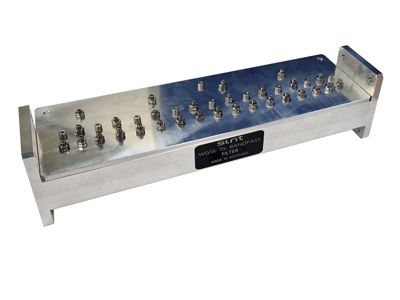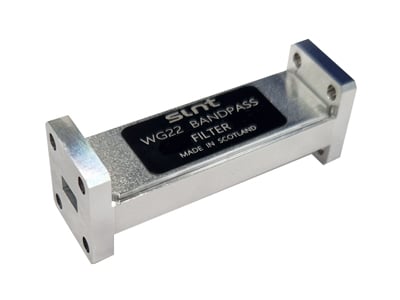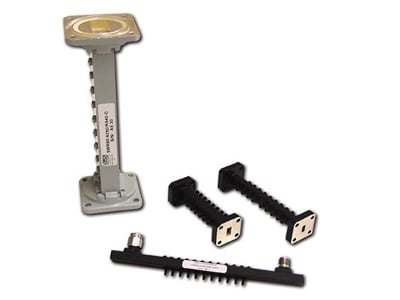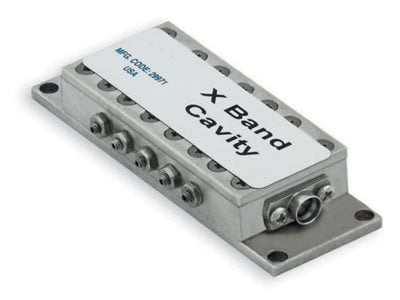- Frequency range: 30 MHz to 80 GHz
- Bandwidth: 3 dB from 0.5% to 66%
- High “Q”, low loss
- High power
- Helical, combline, inter digital, and waveguide
Applications
- Military
- Commercial Aerospace
- Satellite Communications
- Test and Measurement
| Product Series | Center Frequency | Bandwidth | Temperature Range | Power Handling | Data Sheet |
|---|---|---|---|---|---|
| C-Band | 6 GHz | 400 MHz | -55 to 85 deg. C | 10 W | |
| X-Band | 10 GHz | 2000 MHz | -55 to 85 deg. C | 10 W | |
| Ku-Band | 15 GHz | 3000 MHz | -55 to 85 deg. C | 10 W | |
| K-Band | 22 GHz | 6000 MHz | -55 to 85 deg. C | 10 W | |
| Ka-Band Waveguide | 35 GHz | 600 MHz | -45 to 85 deg. C | 1 W |
Smiths Interconnect’s cavity filters offer the user very low insertion loss, steep skirt selectivity, and narrower bandwidths compared to discrete component filters. Designs are available in the frequency range of 30 MHz to 51 GHz and with bandwidth options from less than 0.5% to over 66%.
High “Q” standard and custom designed models offer the lowest insertion loss and best selectivity available for military and commercial applications. Standard cavity filters generally are designed using aluminum as the base metal. As most raw metals are inherently lossy, filter housings are silver plated for improved electrical characteristics and current flow. Brass, copper, aluminum, or bi-metal resonators are used to minimize frequency drift over temperature. Each filter is semi-custom-designed to your exact specification so that you will receive the optimum performance at the lowest cost.
Filter performance is easily predicted using our proprietary software, while CAD files are generated for our CNC machine and fabrication center. Complex designs and working drawings can be generated in a matter of a few hours...not weeks.









